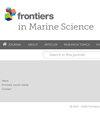19世纪至今威尼斯泻湖光合类群的评价
IF 3
2区 生物学
Q1 MARINE & FRESHWATER BIOLOGY
引用次数: 0
摘要
威尼斯泻湖是地中海最大的过渡环境(近550平方公里)。作为一个过渡性环境,它包含了许多不同的生态位,因此该环境的生物多样性非常高。然而,与此同时,这个泻湖系统不断受到人类活动的压力,几个世纪以来,它已经被人类极大地改变了。例如建造威尼斯城,为商业船只挖掘运河,以及改造泻湖的三个入口。所有这些活动都改变了泻湖内部的循环,改变了河流和海洋输入之间的平衡,也影响了沉积物的摄入,这是盐沼稳定的基础。几个世纪以来,许多作者监测了居住在威尼斯泻湖的光合类群(海藻、盐生植物和海草)。在这项研究中,我们回顾了从19世纪到现在的研究成果,以获得一个完整的、最新的关于栖息在这一环境中的光合物种的观点,观察到在分析的时期,绿藻和异养植物的存在减少,而红藻的存在增加。此外,我们还通过两种不同的生态指数(大型藻类质量指数- MaQI、生态评价指数- EEI)考虑了该环境中报道的物种的生态价值,发现生态价值高的物种的相对贡献随着世纪的推移而减少。我们还回顾了濒危物种和非本地物种的存在,并观察了考虑作品的一些差异。最后,我们还考虑了在线数据库中可用的分子资源,发现只有一半的大藻物种具有参考序列,而高等植物的参考序列几乎达到90%。本文章由计算机程序翻译,如有差异,请以英文原文为准。
Evaluation of photosynthetic Taxa in the Venice Lagoon from the nineteenth century to present day
The Venice Lagoon is the largest transitional environment within the Mediterranean Sea (almost 550 km2 ). Being a transitional environment, it contains many different ecological niches, hence the biodiversity in this environment is very high. However, at the same time, this lagoon system is under constant pressure from human activities, and it has been greatly modified by humans during the centuries. Examples are the construction of the city of Venice, the digging of the canals for commercial ships, and the modifications of the three inlets to the lagoon. All these activities altered the circulation inside the lagoon, modifying the equilibrium between river and sea inputs, also influencing the sediment intake, fundamental for saltmarshes stability. During the centuries, many authors monitored the photosynthetic taxa (seaweeds, halophytes, and seagrasses) inhabiting the Venice Lagoon. In this study, we reviewed works from the nineteenth century to the present time to obtain a complete and updated view of the photosynthetic species that inhabit this environment, observing a decrease in the presence of charophytes and heterokontophytes and an increase in rhodophytes in the analyzed period. Moreover, we also considered the ecological valence of the species reported in this environment through two different ecological indexes (Macroalgae Quality Index – MaQI, Ecological Evaluation Index – EEI), observing a decrease in the relative contribution of the species with high ecological valence along the centuries. We also reviewed the presence of threatened and non-indigenous species, observing some differences in the considered works. Finally, we also considered the molecular resources available on online databases, finding only half macroalgal species with a reference sequence, compared to almost 90% for higher plants.
求助全文
通过发布文献求助,成功后即可免费获取论文全文。
去求助
来源期刊

Frontiers in Marine Science
Agricultural and Biological Sciences-Aquatic Science
CiteScore
5.10
自引率
16.20%
发文量
2443
审稿时长
14 weeks
期刊介绍:
Frontiers in Marine Science publishes rigorously peer-reviewed research that advances our understanding of all aspects of the environment, biology, ecosystem functioning and human interactions with the oceans. Field Chief Editor Carlos M. Duarte at King Abdullah University of Science and Technology Thuwal is supported by an outstanding Editorial Board of international researchers. This multidisciplinary open-access journal is at the forefront of disseminating and communicating scientific knowledge and impactful discoveries to researchers, academics, policy makers and the public worldwide.
With the human population predicted to reach 9 billion people by 2050, it is clear that traditional land resources will not suffice to meet the demand for food or energy, required to support high-quality livelihoods. As a result, the oceans are emerging as a source of untapped assets, with new innovative industries, such as aquaculture, marine biotechnology, marine energy and deep-sea mining growing rapidly under a new era characterized by rapid growth of a blue, ocean-based economy. The sustainability of the blue economy is closely dependent on our knowledge about how to mitigate the impacts of the multiple pressures on the ocean ecosystem associated with the increased scale and diversification of industry operations in the ocean and global human pressures on the environment. Therefore, Frontiers in Marine Science particularly welcomes the communication of research outcomes addressing ocean-based solutions for the emerging challenges, including improved forecasting and observational capacities, understanding biodiversity and ecosystem problems, locally and globally, effective management strategies to maintain ocean health, and an improved capacity to sustainably derive resources from the oceans.
 求助内容:
求助内容: 应助结果提醒方式:
应助结果提醒方式:


